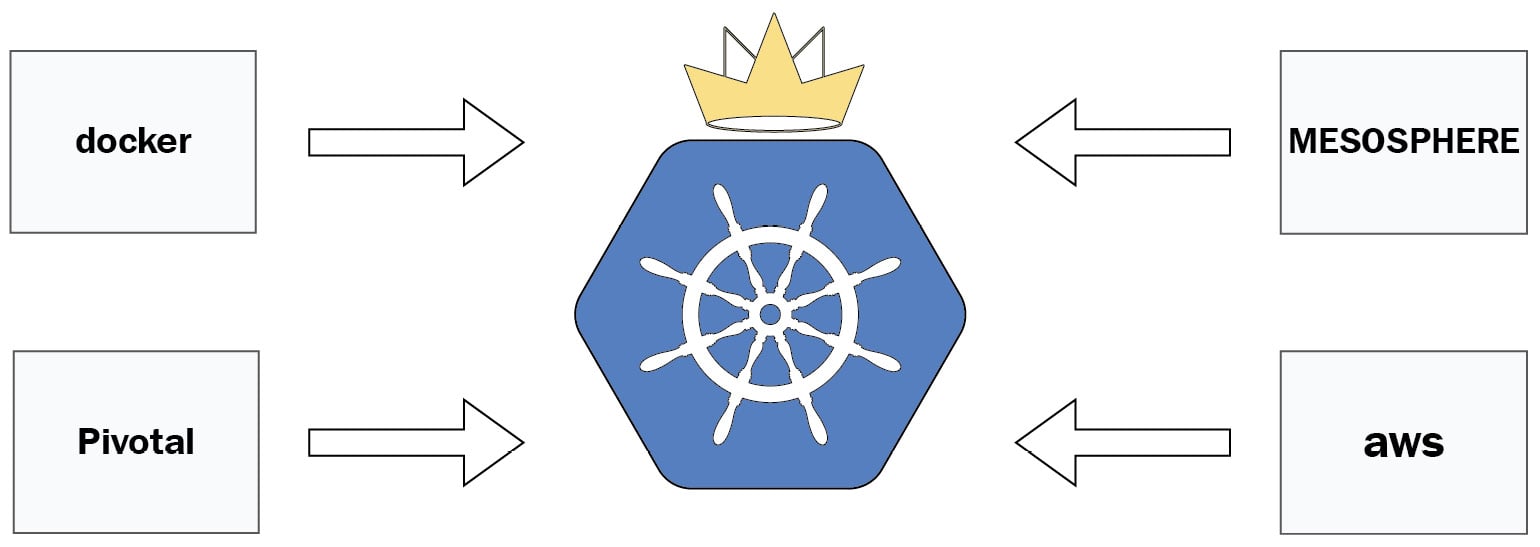The Kubernetes journey
The Kubernetes journey to become the leading container orchestration platform has seen many fascinating moments. Kubernetes was an open source initiative by a few Google engineers based on an internal project called Borg. From day one, Kubernetes had the advantage of heavy production usage at Google and more than a decade of active development as Borg. Soon, it became more than a small set of Google engineers, with overwhelming community support. The container orchestration war was a tough fight between Docker, Mesosphere DC/OS, Kubernetes, Cloud Foundry, and AWS Elastic Container Service (ECS) from 2015. Kubernetes was outperforming its peers slowly and steadily.
Initially, Docker, Mesosphere, and Cloud Foundry announced native support for Kubernetes. Finally, in 2017, AWS announced ECS for Kubernetes. Eventually, all the cloud providers came up with a managed Kubernetes offering. The rivals had no choice other than to provide native support for Kubernetes because of its efficacy and adoption. These were the winning moments for Kubernetes in the container orchestration war. Furthermore, it continued to grow to become the core of the cloud-native ecosystem, with many tools and patterns evolving around it. The following diagram illustrates the container orchestration war:

Figure 1.1 – The container orchestration war
Next, let's learn about the characteristics of the new operating model.



